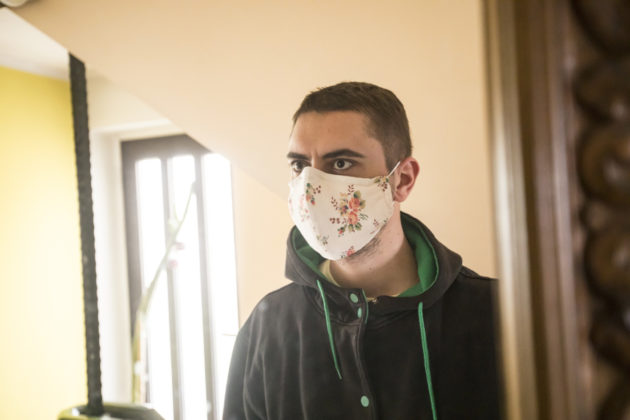OTTAWA, Ont. – Transport Canada is offering additional guidance for vehicle operators who wear face coverings to help minimize the spread of Covid-19.
The Public Health Agency of Canada (PHAC) recently announced that all essential workers crossing the Canada-U.S. border — including truck drivers — must wear a non-medical mask or face covering. New York, New Jersey, Maryland, Rhode Island and Pennsylvania have rules of their own.
But masks are seen as a way to help keep any commercial drivers from limiting the spread of respiratory droplets when it’s difficult to maintain a two-meter distance from other people.
The latest voluntary guidance from Transport Canada focuses on how to use or create such masks.
These are not the types of masks used in hospital settings, though. Respirators such as N-95 masks are to be conserved for healthcare workers and others offering direct care for Covid-19 patients. And any masks are merely seen as one tool to prevent the virus, along with hand washing, regular cleaning of commonly touched surfaces, and social distancing.
Many of those steps were outlined in Federal safety guidance to protect drivers.
Instructions on how to make “sew” and “no-sew” cloth face coverings from T-shirts, bandanas, or other cotton-like materials can be found here.
Face coverings should:
- Be made of multiple layers of absorbent fabric (such as cotton)
- Cover the mouth and nose without gaps
- Fit securely to the head with ties or ear loops
- Allow for easy breathing
- Be changed as soon as possible if damp or dirty
- Stay the same shape after machine washing and drying
But the coverings should not:
- Be placed on children under the age of 2
- Be placed on anyone unable to remove them without assistance or anyone who has trouble breathing
- Be made exclusively of plastic sheeting or materials that easily fall apart (e.g. tissues)
- Be shared with others
- Impair vision or interfere with tasks
Warning signs of inappropriate masks or face coverings include masks made of a non-breathable material like a plastic bag, masks secured in place using tape or another inappropriate material, or someone who is continuously adjusting the face covering.
“Wearing a face covering can also prevent you from touching your nose and mouth. Remember not to touch or rub your eyes, as this is another route of infection,” Transport Canada adds in the document.
Other mask-related precautions listed in the document include the following:
- face covering should be well-fitted (non-gaping) to cover the mouth and nose
- avoid touching your face mask while using it
- change a cloth mask as soon as it gets damp or soiled
- put the soiled mask directly into a washing machine, or a bag that can be emptied into a washing machine and then dispose of the bag
- cloth masks can be laundered with other items using a hot cycle, and then dried thoroughly
- non-medical masks that cannot be washed should be discarded and replaced as soon as they get damp, soiled or crumpled
- dispose of masks properly in a lined garbage bin
- do not leave discarded masks in vehicles.
If a border services officer needs a driver to remove a mask or face covering to verify identity, they’ll ensure the driver is at least two meters away before doing so, a Canada Border Services Agency (CBSA) spokesman said, responding to a question from TruckNews.com.


